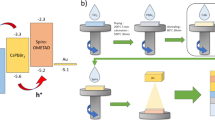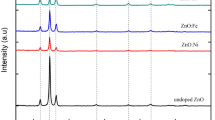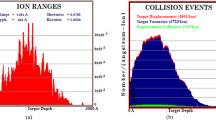Abstract
Transient global heat transfer simulations are done to analyse the impact of molybdenum shield on carbon and oxygen impurity formation in mc-silicon grown by Directional Solidification (DS) process. Carbon and oxygen are the two main impurities that have a direct impact on affecting the conversion efficiency of the solar cell. The molybdenum shield effectively guides the argon gas flow within the furnace and carries SiO away from the melt free surface and the incorporation of carbon into the melt from the graphite furnace elements is also reduced. The molybdenum shield within the furnace reduces the incorporation of carbon and oxygen concentration in the ingot thereby enhancing the quality of the ingot. For the ingot grown in the conventional furnace, the higher concentration region of carbon ranges between 2.45 × 1017 atom/cm3 to 2.25 × 1017 atom/cm3 and the lower concentration region of carbon ranges between 6.77 × 1016 atom/cm3 to 8.56 × 1015 atom/cm3. For the ingot grown with molybdenum shield, the higher concentration region of carbon ranges between 1.06 × 1017 atom/cm3 to 9.76 × 1016 atom/cm3 and the lower concentration region of carbon ranges between 4.32 × 1016 atom/cm3 to 1.61 × 1016 atom/cm3. Similarly, for the ingot grown in the conventional furnace, the higher concentration region of oxygen ranges between 2.51 × 1017 atom/cm3 to 2.31 × 1017 atom/cm3 and the lower concentration region of oxygen ranges between 6.85 × 1016 atom/cm3 to 7.67 × 1015 atom/cm3. For the ingot grown with molybdenum shield, the higher concentration region of oxygen ranges between 2.49 × 1017 atom/cm3 to 2.25 × 1017 atom/cm3 and the lower concentration region of oxygen ranges between 8.75 × 1016 atom/cm3 to 9.10 × 1015 atom/cm3. Simulations are done for the whole DS growth process for the conventional furnace having no molybdenum shield and for the furnaces having molybdenum shield fixed at three different positions. The molybdenum shield incorporation in DS furnace shows a significant impact on uniformity and reduction of carbon, oxygen impurity distribution in the as-grown mc-silicon ingot.
Similar content being viewed by others
References
Wu Z, Zhong G, Zhang Z, Zhou X, Wang Z, Huang X (2015) Optimization of the high-performance multi-crystalline silicon solidification process by insulation partition design using transient global simulations. J Cryst Growth 426:110–116. https://doi.org/10.1016/j.jcrysgro.2015.05.021
Xu M, Zheng L (2014) Hui Zhang. J Cryst Growth 385:28–33
Chen XJ, Nakano S, Liu LJ, Kakimoto K (2008) Study on thermal stress in a silicon ingot during a unidirectional solidification process. J Cryst Growth 310:4330–4335
Jiptner K, Gao B, Harada H, Miyamura Y, Fukuzawa M, Kakimoto K (2014) Takashi Sekiguchi. J Cryst Growth 408:19–24
Lin HK, Wu MC, Chen CC, Lan CW (2016) Evolution of grain structures during directional solidification of silicon wafers. J Cryst Growth 439:40–46
Lan CW, Yang CF, Lan A, Yang M, Yu A, Hsu HP, Hsu B, Hsu C (2016) Engineering silicon crystals for photovoltaics. Cryst Eng Comm 18:1474–1485
Istratov AA, Buonassisi T, Pickett MD, Heuer M, Weber ER (2006) Control of metal impurities in “dirty” multicrystalline silicon for solar cells. Mater Sci Eng B 134:282–286
Coletti G (2013) Sensitivity of state-of-the-art and high efficiency crystalline silicon solar cells to metal impurities. Prog Photovoltaics: Res Appl 21:1163–1170
Sameshima T, Miyazaki N, Tsuchiya Y, Hashiguchi H, Tachibana T, Kojima T, Ohshita Y, Arafune K, Ogura A (2012) Interaction between Metal Impurities and Small-Angle Grain Boundaries on Recombination Properties in Multicrystalline Silicon for Solar Cells. Appl Phys Express 5:042301
Wang P, Cui C, Yang D, Yu X (2020) Seed‐Assisted Growth of Cast‐Mono Silicon for Photovoltaic Application: Challenges and Strategies. Solar RRL 4:1900486
Gao B, Nakano S, Kakimoto K (2011) Effect of crucible cover material on impurities of multicrystalline silicon in a unidirectional solidification furnace. J Cryst Growth 318:255–258
Dropka N, Buchovska I, Degenhardt U, Kiessling FM (2020) Influence of impurities from SiC and TiC crucible cover on directionally solidified silicon. J Cryst Growth 542:125692
Gao B, Chen XJ, Nakano S, Kakimoto K (2010) Crystal growth of high-purity multicrystalline silicon using a unidirectional solidification furnace for solar cells. J Cryst Growth 312:1572–1576
Nakano S, Chen XJ, Gao B, Kakimoto K (2011) Numerical analysis of cooling rate dependence on dislocation density in multicrystalline silicon for solar cells. J Cryst Growth 318:280–282
Ding C, Huang M, Zhong G, Liang M, Huang X (2014) A design of crucible susceptor for the seeds preservation during a seeded directional solidification process. J Cryst Growth 387:73–80. https://doi.org/10.1016/j.jcrysgro.2013.08.039
Vorob’ev AN, Sid’ko AP, Kalaev VV (2014) Advanced chemical model for analysis of Cz and DS Si-crystal growth. J Cryst Growth 386:226–234
Smirnov AD, Kalaev VV (2009) Analysis of impurity transport and deposition processes on the furnace elements during Cz silicon growth. J Cryst Growth 311:829–832
Smirnov AD, Kalaev VV (2008) Development of oxygen transport model in Czochralski growth of silicon crystals. J Cryst Growth 310:2970–2976
Chen XJ, Nakano S, Liu LJ, Kakimoto K (2008) Study on thermal stress in a silicon ingot during a unidirectional solidification process. J Cryst Growth 310:4330–4335
Teng Y-Y, Chen J-C, Lu C-W, Chen C-Y (2010) The carbon distribution in multicrystalline silicon ingots grown using the directional solidification process. J Cryst Growth 312:1282–1290. https://doi.org/10.1016/j.jcrysgro.2009.11.020
Hu C, Chen JC, Nguyen THT, Hou ZZ, Chen CH, Huang YH, Yang M (2018). J Cryst Growth 484:70–77
Huanga LY, Lee PC, Hsieh CK, Hsub WC, Lan CW (2004) On the hot-zone design of Czochralski silicon growth for photovoltaic applications. J Cryst Growth 261:433–443
Liu L, Nakano S, Kakimoto K (2008) Carbon concentration and particle precipitation during directional solidification of multicrystalline silicon for solar cells. J Cryst Growth 310:2192–2197. https://doi.org/10.1016/j.jcrysgro.2007.11.165
Li Z, Liu L, Liu X, Zhang Y, Xiong J (2012) Effects of argon flow on melt convection and interface shape in a directional solidification process for an industrial-size solar silicon ingot. J Cryst Growth 360:87–91. https://doi.org/10.1016/j.jcrcysgro.2011.11.053
Wenjia S, Chen L, Xiaofang Q, Yang W, Wang J (2019) Numerical analysis and optimization of gas flow and impurity control in directional solidification multi-crystalline. J Cryst Growth 527:125244. https://doi.org/10.1016/j.jcrysgro.2019.125244
Teng Y-Y, Chen J-C, Huang B-S, Chang C-H (2014) Numerical simulation of impurity transport under the effect of a gas flow guidance device during the growth of multicrystalline silicon ingots by the directional solidification process. J Cryst Growth 385:1–8. https://doi.org/10.1016/j.jcrysgro.2013.01.040
Author information
Authors and Affiliations
Corresponding author
Additional information
Publisher’s Note
Springer Nature remains neutral with regard to jurisdictional claims in published maps and institutional affiliations.
Rights and permissions
About this article
Cite this article
Kumar, M.A., Srinivasan, M. & Ramasamy, P. Reduction of Carbon and Oxygen Impurities in mc-Silicon Ingot Using Molybdenum Gas Shield in Directional Solidification Process. Silicon 13, 4535–4544 (2021). https://doi.org/10.1007/s12633-020-00775-w
Received:
Accepted:
Published:
Issue Date:
DOI: https://doi.org/10.1007/s12633-020-00775-w




